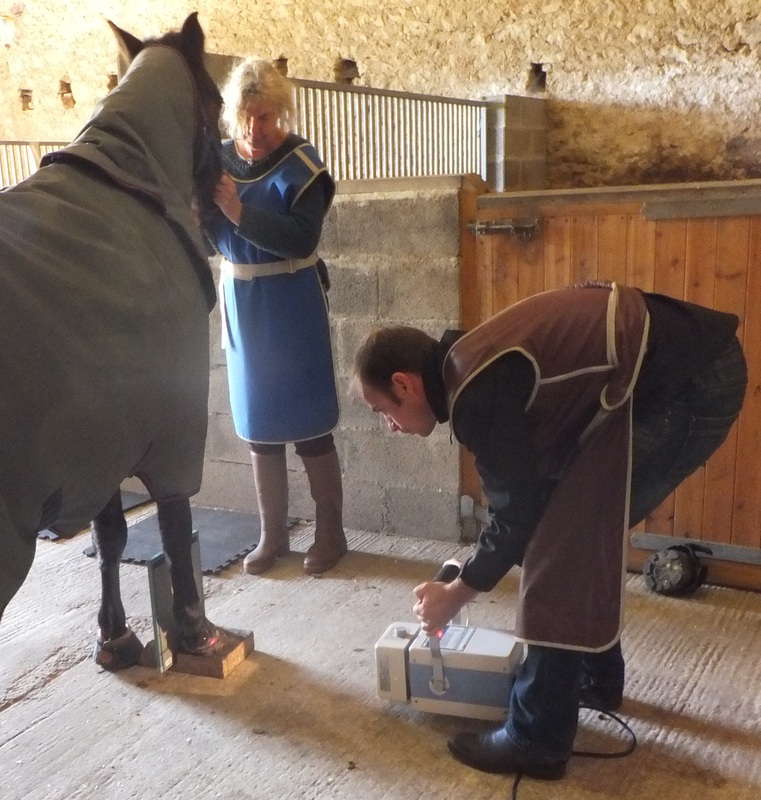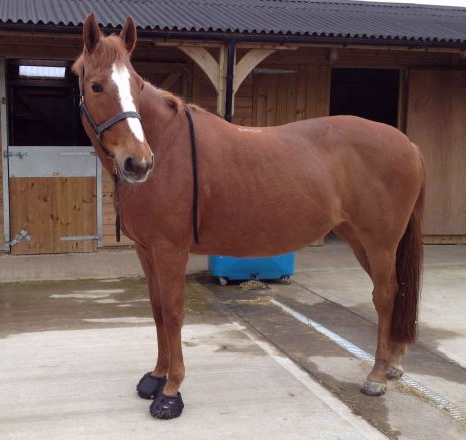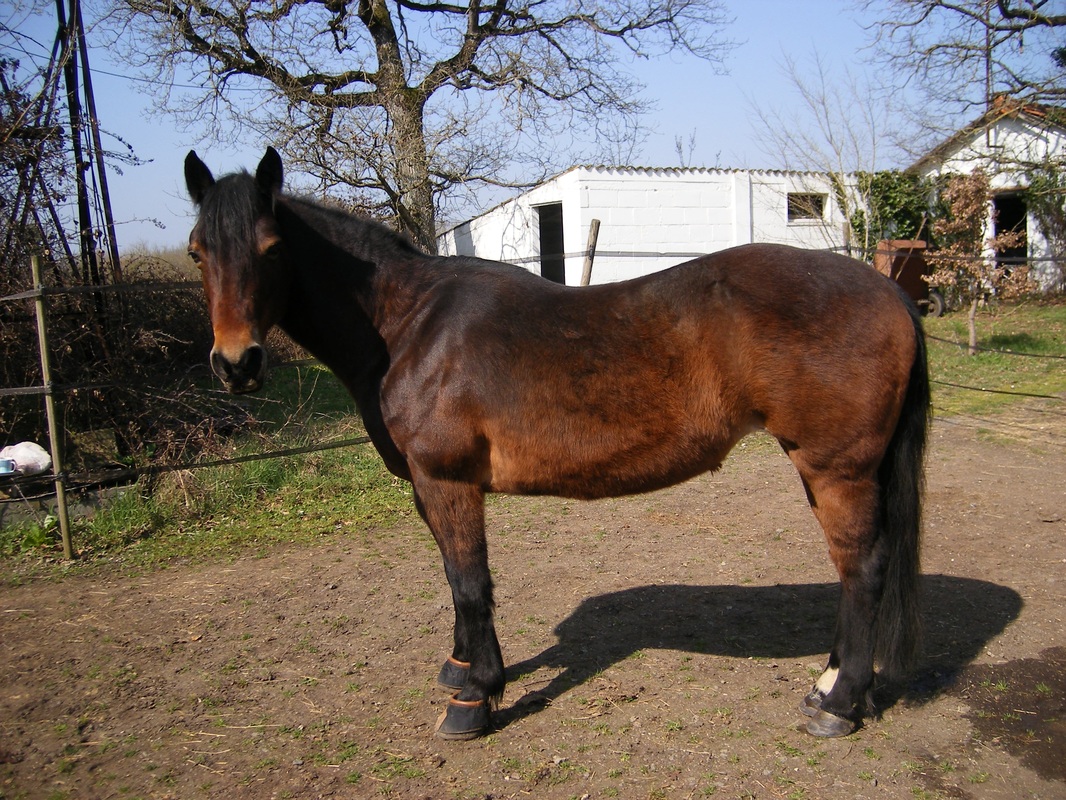| For many horses, barefoot rehabilitation using boots and pads works best, as feet can be fully protected and supported whilst allowing for the short trimming intervals (often 1-2 weekly) that may be needed to keep the feet perfectly aligned following rotation, plus owners can keep the feet clean and healthy, and importantly weight bearing on the less-than-well-connected hoof walls can be reduced. Pete Ramey explains the advantages of using hoof boots and pads following laminitis in his article "Boots and Pads: A True Breakthrough in Healing". Boots and pads can be indispensable from the moment laminitis strikes - some horses are more comfortable with thick pads even when on a deep conforming bed, and keeping a padded boot on the supporting foot whilst the other foot is trimmed or x-rayed can significantly increase the comfort - and willingness - of the horse. Once the feet have been correctly realigned with a derotating trim, boots and pads can be used to protect and support the feet as the horse returns to movement, whether gradually increasing access to a safe turnout area or building up in-hand exercise. TLS director Karen's mare Ziggy had laminitis in winter 2009. Hoof wall grooving and heart bar shoes followed and her feet were fully realigned, but Ziggy never became totally sound, until in 2012 the heart bar shoes were removed for further x-rays and Ziggy walked out sound for the first time in years. She has remained barefoot ever since, fitted with boots and pads and has never looked back. The Boot Bank will enable owners of horses recovering from laminitis to borrow boots short-term, perhaps because they want to try boots before they buy their own, or because with money being spent on blood tests and x-rays, they may not be able to afford to buy new boots as soon as their horse needs them, or because they may not be sure of the size they need, or their horse's feet may have changed shape during rehab - borrowing means they can always use the correct size TLS hopes that by loaning boots to owners, laminitic horses will get the support and comfort that they need and be able to return to movement as soon as it is safe to do so, thereby speeding up their recovery. TLS is dependent on donations and is appealing for old but usable boots of all makes and sizes ready for the next laminitic horse or pony that needs help. If you have boots that you would be willing to donate, please email us at [email protected]. | |
|
The Laminitis Site is appealing for donations of new or used hoof boots for the Boot Bank it is setting up.
3 Comments
Linda Benson
9/22/2016 11:57:10 am
Please can you advise where my friend can get some boots for her horse suffering with Laminitis, she has been told by the blacksmith today they would help her recover.
Reply
9/22/2016 04:42:32 pm
Hi Linda
Reply
Leave a Reply. |
News
What's new in research New Dengie Laminitis Brochure uses TLS photos WHW new laminitis leaflet2020 Global Equine Endocrine Symposium proceedings Articles about feet December 2019 Autumn Laminitis with Danica Pollard Free ACTH Testing Do all IR/EMS horses have laminitis? Clinical signs of PPID may vary with location Velagliflozin - preventative treatment for endocrinopathic laminitis? USEF allows pergolide to be taken by competing horses Pergolide molasses-flavoured paste available in UK NEHS 2018 Risk factors for EMS/Endocrinopathic Laminitis Seasonal rise in pituitary hormonesPPID - weekly ACTH cutoffs now being used Sole Support Do you CARE about laminitis? Pituitary Pars Intermedia Dysfunction - The Arabian Magazine EMS & Insulin Dysregulation - The Arabian Magazine Laminitis and the Feet - The Arabian Magazine The Arabian Magazine Laminitis article Paddock Paradise in French New EEG Recommendations for the diagnosis and treatment of PPID Archives
February 2024
Categories |




 RSS Feed
RSS Feed